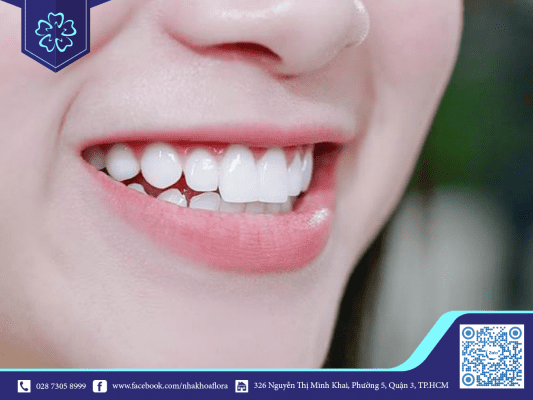What you need to know about your teeth before braces will help you have solid knowledge while reducing your worries throughout the brace process. So what do you need to know about teeth and braces? Let’s find out with Flora dentistry in this article!
1. Teeth are unique
Fingerprint-like teeth are your only. In some cases dental records are sometimes used to identify human remains. Even identical twins don’t have identical teeth. And there is an interesting fact besides fingerprints, there are also unique ridges on the tongue in each person.

2. What is the number of adult teeth? The location of each tooth?
The total number of adult teeth is 32. Teeth are divided into 3 main groups, including: intodontism (teeth 1, 2 and 3), pre-molars (teeth 4 and 5) and molars (teeth 6, 7, 8).
Usually, as people enter adulthood (between the ages of 17 and 25), new wisdom teeth begin to grow. At this time, there will be 32 teeth on the jaw (if the number of wisdom teeth is 4).
3. Teeth are like icebergs – if misaligned need braces
Teeth are not only white porcelain crowns on the gums but also tooth legs. If misaligned teeth lead to cosmetic effects, chewing and dental pathologies you should brace. Braces are the process of shifting the root of the tooth, so it ensures the effectiveness of braces to help the teeth to be healthy later. You need to keep in mind what to know about these braces to avoid the effects of bad braces.
See more: 5 differences between braces and transparent braces

4. Where does tooth enamel come from?
Tooth enamel is located at the outermost position of the tooth, made by 2 compounds Fluor and Calcium, protecting the teeth from the effects of acid, hot, cold … When providing fluoride to the child, they will load into the structure of the teeth that are forming in the thickness of the jaw bone when the teeth have not yet grown until the teeth are fully grown. This is what you need to know about your teeth to better protect your teeth.
Read more: Top 10 foods that are good for your teeth
5. What does tooth color indicate to your health?
The color of beautiful white teeth shows good oral health, you do not suffer from dental pathologies or malnutrition. However, if the teeth gradually appear yellow or deep, it shows poor oral hygiene or the body is gradually appearing pathologies. This may be explained because the parts of the body are related. One part of the disease also affects the other. Typically, if you have cavities, it can affect the gums, pulp or cause headaches.
6. Teeth grow without enamel
Tooth enamel is a glossy white enamel, the outermost position of the tooth has the function of covering the entire structure of the tooth, helping the teeth withstand the impact of temperature, acidity, alkali … in the food.
Tooth enamel deficiency is the incomplete formation or faulty enamel structure during the period of tooth enamel formation, leading to a deficiency of the number of tooth enamel with the following manifestations:
- In young children: The enamel of the teeth makes the surface of the baby teeth black brown, the teeth are noseed, gradually amputated towards the root of the tooth.
- In adults: Tooth enamel production causes the surface of the teeth to appear uneven yellow spots and scattered throughout the surface of the teeth, exposing the dentin below.
7. Teeth do not exist permanently for many reasons
Teeth are unlikely to last permanently on the jaw because of problems such as age. Older age, weakened bones and affect the quality of teeth cause brittle, fall out. Besides the age factor, poor oral hygiene, eating too much hard food or not treating dental diseases early are also the cause of tooth loss.

8. Home to more than 300 types of bacteria
You may not know that dental plaque contains millions of bacteria, which are made up of 200 to 300 different species of origin. The main culprits for poor tooth condition are Streptococcus mutans, which convert sugar and other carbohydrates into acids that corrode your teeth. What you need to know about these teeth helps you take more notes about plaque and oral hygiene
9. Where are the clings formed
Tartar is usually concentrated in the neck of the tooth, which is opaque white or light yellow. These plaques appear if you do not clean your teeth 2-3 times a day or have a habit of eating hard but unwashed foods. These plaques after a long period of not being cleaned will cause tartar to greatly affect oral health.
10. Create 10,000 gallons of saliva
Your body produces about a quarter of a day, which secretes about 10,000 gallons over a lifetime. Saliva plays many important roles in your overall health. For example, it makes food easier to swallow and contains enzymes to kick-start digestion. When it comes to teeth, saliva washes away the remaining pieces of food, and contains calcium and phosphates, which can neutralize acid in damaged plaque and cavities.
What you need to know about your teeth and braces is a great knowledge for you to know more about oral health. Flora Dental Contact for cheap braces with great incentives is always updated at
Fanpage: Flora Dentistry
